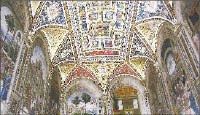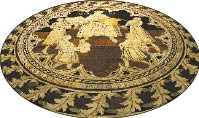Russ’s Market in Dickson, Tennessee: The trip is now a few hours old, with a C-minus Greyhound start. We were an hour late leaving Memphis, the bus is horribly crowded, and among its passengers are three people on crutches, two others who stretch across the aisle because of their size, and four or five kids who won’t stop moving or screaming. Anything else would have been disappointing.
Knoxville: There was a woman upset about something, raising all kinds of hell, and this guy identified himself as a police officer and told her, “I will help you, lady, but you need to shut your mouth.” She shouted, “I will not shut my mouth.” And by golly, she didn’t.
The driver was both surly and strange. When he was giving the usual “Don’t smoke or drink or make noise on the bus” speech, he asked us if we all liked Lawrence Welk. There was a long, confused silence. “Well,” says the driver, “If I hear anybody’s stereo playing on this trip, I’m gettin’ out my Lawrence Welk, and it’s gonna be loud.” Quietest bus I ever rode on.
Wytheville, Virginia: A tiny station, a shed in a McDonald’s parking lot. The lady behind the desk asked about my computer. I said I’m a writer, and then she said, “Yeah, I’m getting my bachelor’s degree, too.” Huh? “Mine is in hotel and restaurant management, but what I really want to get into is tour directing. I’m real good with people, which is why I work here, because I just love being around people. This job isn’t much, but it’s good while I’m in school, and it can lead to other things. But I’m gonna have to leave town when I get done with school, ’cause there just isn’t anything around here.”
I didn’t get much work done in Wytheville.
Around 10 p.m., all of a sudden the little parking lot was filled with buses. First the Detroit bus came in. Then came the New York bus, then the St. Petersburg bus that I was getting on to get down to North Carolina. All the smokers were hovering in the breeze between those buses when one more came in, one reading Dallas. Here was a parking lot in Virginia filled with people who tomorrow will be in New York and Dallas and Florida and Detroit.
York, Pennsylvania: The bus we were waiting for was broken down somewhere, and we didn’t know when it would get there. There was one woman who was getting real uptight, drawing long breaths every now and then, shifting obviously uncomfortably in her chair, and trying to draw other people into a conversation about where she was going and how long she had been waiting.
Finally, the driver stuck his head in the door and called out “All aboard for Elmira!” When he took the loud woman’s ticket, he said, “Oh, you’re going to Rochester? You have to wait for the 4:30 bus.” She heaved a breath, threw up her arms, and looked around for somebody to complain to, but we all averted our eyes. When the bus pulled out into the street, I saw her waving her arms at a baggage attendant who was staring intently at his feet.
When we pulled out of the next station, the driver said as he shut the door, “Lord God have mercy, I wanna go home and go to bed.” He seemed to have a particular hang-up about trucks. Whenever a truck went by, he would yell out, “Trucks, trucks, trucks!” Somebody made the mistake of asking him about trucks, and he spouted, “Well, y’see, they always got to run at night. I’ll give you a crisp new five dollar bill for every truck you, see on the road. They just got to run at night, and then when they go by you, they make a big swoosh of air, which don’t affect your average car but which’ll flat toss a bus around the road.”
Ithaca, New York: The station attendant is on the phone, talking at a high volume and not caring at all that there are other people in the room. I heard him say, “Yeah, the f—in’ Giants sucked,” and then a few minutes later he made several whispered references to smoking pot — “whispers” that could be heard loud and clear across the room. He then admonished whoever was on the phone with him, “Dude, you didn’t drink no half-bottle of vodka. Dude, you’d be f—in’ dead!”
Rochester, New York: When we got here, I asked the driver to open up the luggage compartment so I could get my backpack. His response was, “Sorry, these guys here are union. I can’t touch that thing.”
Lake Placid: I’m using an Ameripass, and I asked the ticket agent/sandwich maker if I needed anything else to get on the bus. She snapped at me, “We don’t deal with those things.” Then she made me a crappy turkey sandwich. When I showed the pass to the driver, I asked if he needed to see any ID or anything, and he snapped at me, too: “I don’t give a shit, just get on the bus.”

